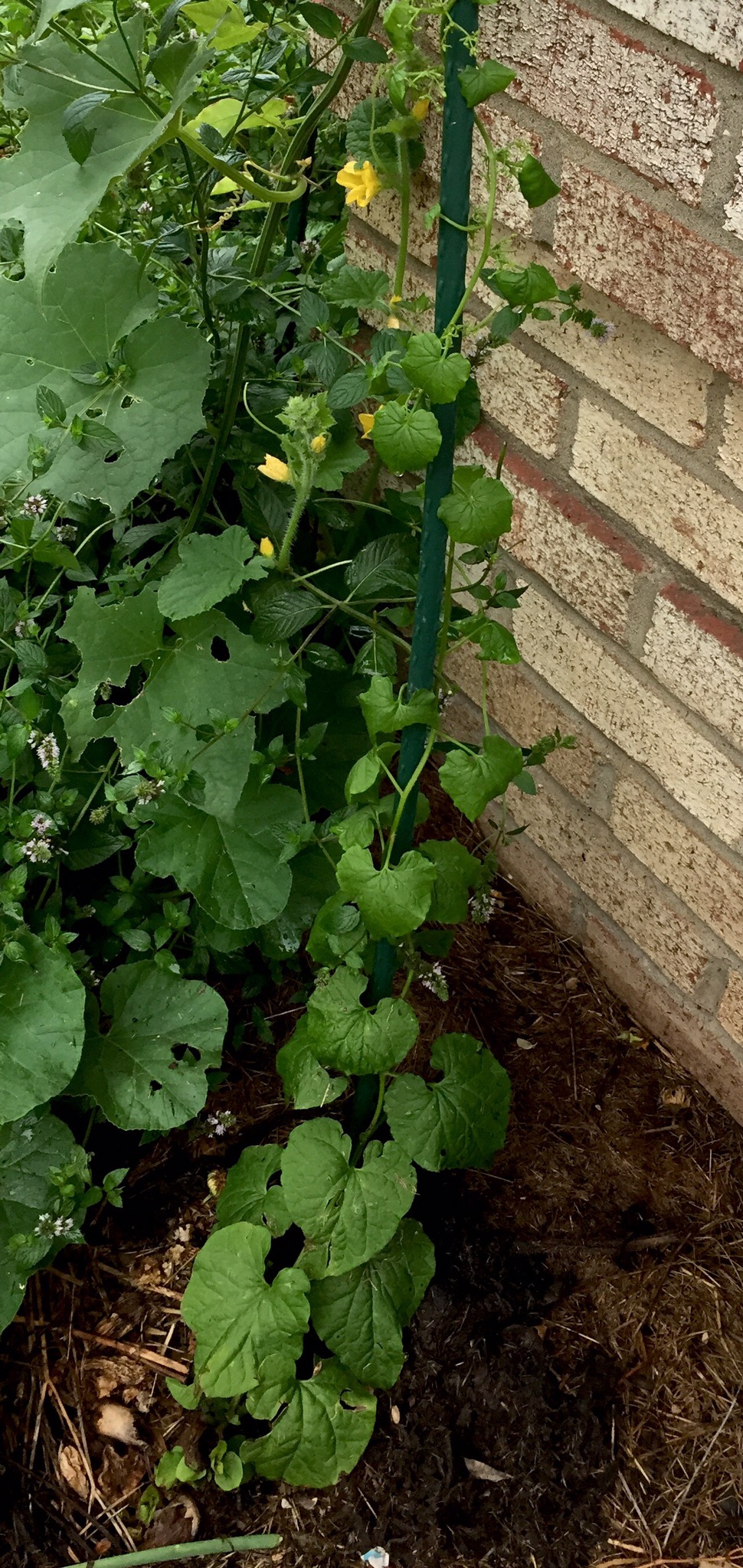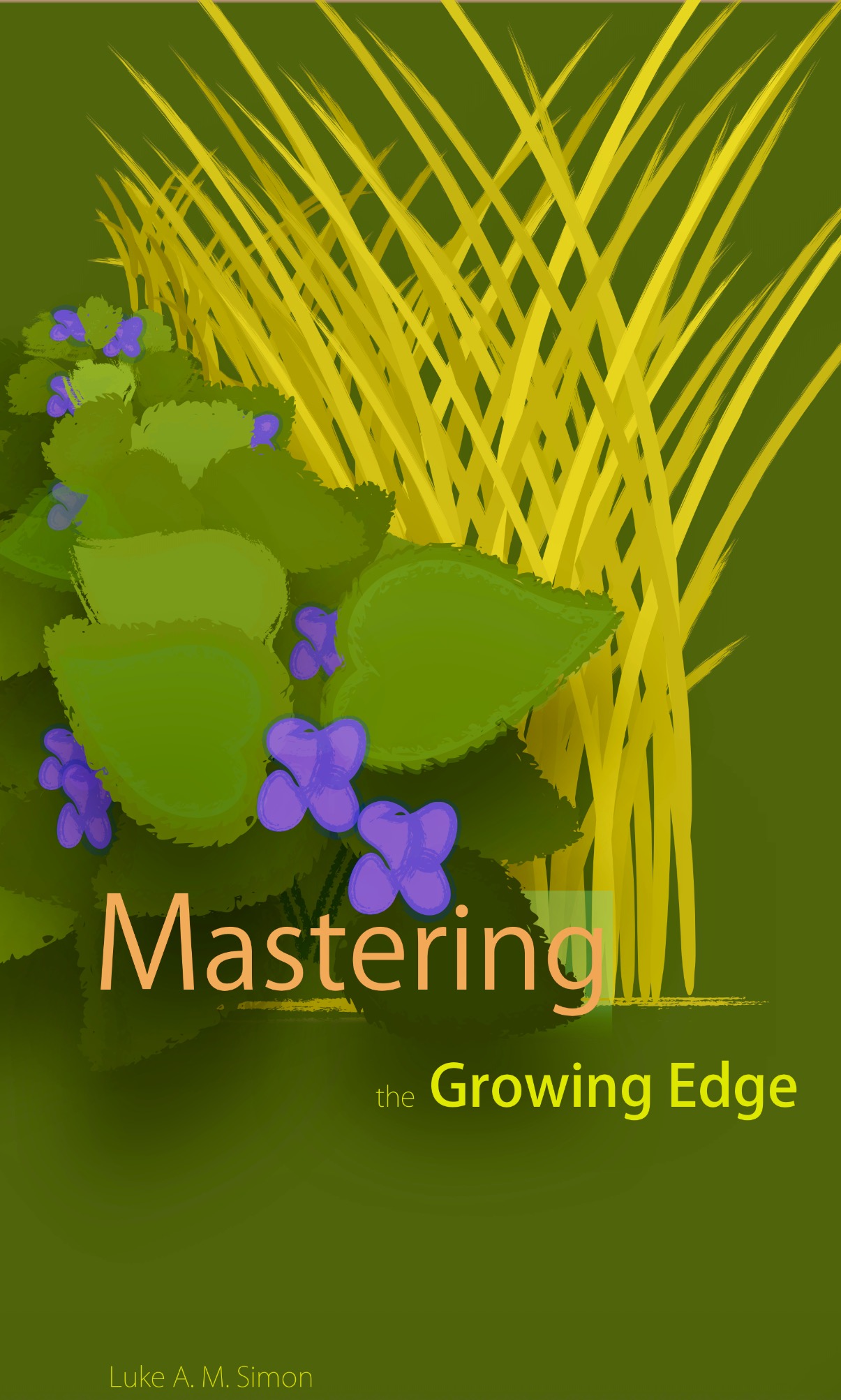Scanning page after page on late night searches for interesting plants, there is one that has always topped my list of most lusted after leaf.
Hablitzia tamnoides, or Caucasion mountain spinach, is the sole member of the genus Hablitzia, closely related to Amaranth. It is a perennial vine, growing 6-10 ft (or so), hardy to zone 4 by most accounts, boasting the title of ‘the’ perennial spinach, with harvest beginning in very early spring. Tantalizing, isn’t it?

The plant is also said to be triploid, which is supposed to result in poor germination. Diploid strains seem to have surfaced in the gene pool after increasing interest in the plant. Years ago the seed was only available per the kindness of a handful of growers -sometimes at a dollar a seed as I recall -aside from any shipping.
I have traded, bought, begged hablitzia seed from several sources, for several years, gotten several strains. Every year I have carried out the most carefully composed care I can contrive to obtain a healthy plant. They have invariably died.

Every year I have inched closer, with barely a sprout the first year. In following years, I began getting what I think must be diploid seed strains, because the germination greatly improved to about 90 percent. I also began stratifying them for shorter durations; because one gardener told me he gets sprouts by simply putting the planted flat in his root cellar for two weeks in fall. Which one allowed the improvement in germination is hard to tell.
Once germination was no longer a problem, I achieved whole trays of the plants. This was only for one by one, day by day, each plant to wilt. The next day I’d find it flat on the ground, dead.
I figured it must be a bacterial infection. What kind I am not sure. The only disease I have ever heard hablitzia succumbs to is botrytis, but I had never seen a sign of the ‘ash.’
It may have just been post hoc, but I found the greatest onslaught usually followed even slight long term excess of water -such as watering two days in a row. Now I keep a tight leash on any watering, waiting until the soil completely dries out, then drenching. The plants seem to like this. Other variables may be at work.
This year, I finally made a breakthrough: I have continued using more and more rock powder, with better and better results for the plants. Most describe hablitzia as a ‘woodland’ plant; but the situations that seem to give the best results simulate dry river beds, or rock crevices. They seem to like tons of available minerals, little nitrogen, and alternating dry and wet, with lots of sun. Providing enough rock seems to be especially important.
I started the seeds last year in a simple organic blend of potting soil. This includes small amounts of peat moss, and chopped wood chips, and has proven the best choice. Once sprouts appeared, I dusted the plants heavily with a very silica-rich rock powder called wollastonite.*
Also, I only filled the pot about half way with soil. This way the walls block most movement of air, and reflect heat and light on the seedlings. Because the soil is thinner, it dries out faster too.
Once the seedlings achieved true leaves, I transplanted into simple, unamended clay I dug up from under a healthy clover plant, mixed with wollastonite until it was white. I put the transplanted seedlings in the shade, and didn’t water for the first day. When I did finally water, I put them in full sun for a couple hours, to dry off the leaves, then put back in the shade.
The plants that followed were some of the most sturdy specimen I have ever grown. I dusted again with wollastonite, and moistened with water I added a little honey to (antibacterial properties). Bacterial wilt stayed away for a long time.
I gave away a couple of these plants, hoping they would live somewhere. Haven’t heard back any successful reports. I gave two to one of my clients. These I dusted and sprayed during a later visit in hopes of holding off any possible infection. One died. One took.
Yes, one continued to grow beyond the size of any hablitzia I have grown. Then it vined. It even bloomed! This spring, it’s sprouting!

Obviously I’m just short of delirious. What’s more, I am reverse engineering the heck out of this situation in the hopes I can actually get one to grow in Mortal Tree. I transplanted several of the other plants to the food forest last year. They all died -some due to animals though. Perhaps they would have overcome the wilt otherwise.
The situation at my client’s is a southeast corner of their white brick house, next to a concrete patio. This protects from all the most undesirable winds, but is wide open to early morning, and some mid-day sun. It is also under the rain gutter, which overflows in downpours, but dries out quickly after because of all the reflected sun. The soil isn’t notably good -actually quite gravelly there. Spent flower bouquets, and a few kitchen scraps under thin grass in a sort of thin Lasagna Garden fashion provides a small flow of nutrients. If you would like to learn more about the site, see this For example:

Eventually I will get one of these plants to flourish in Mortal Tree. Until then, I am ecstatic my clients have achieved one of these precious plants, and look forward to hearing what they think of the flavor when they begin harvesting. That will probably be next year of course. We want to be sure this plant is here to stay!
*I got it from the mine owner when I met him at a conference, but he sells as small as 50 lb bags on request through his website.




I want this plant, wantwantWANT it, and had some germinate this spring. Just 3 infant plants but that will be enough if they grow. My dry climate and rather extreme drainage might actually benefit it.
LikeLiked by 1 person
So I’m not alone in the world! I sincerely hope it grows well for you. You’ve probably seen in Stephen Barstow’s book how much he uses the plant. I was reading one post on his blog where he shows hablitzia coming up like weeds in the pots of other plants he was lugging in for the winter. He is sitting on a ton of rock, and mentions that much of his garden only has a few inches of true soil. So once again: the plant seems to like a lot of minerals in the soil -or at least a climate that goes with them. By all means keep me updated on your endeavor. Hoping the best.
LikeLike
Can I have your permission to revise and reprint this material on Hablitzia tamnoides on my blog, God as a Gardener? Thank you for considering. Carolyn Dr. Carolyn Adams Roth carolyn.roth@ymail.com http://www.CarolynRothMinistry.com
LikeLike
Oh, dear, what meaning you might derive from this post! You are of course more than welcome to do as you like with it, Carolyn. Thank you for asking. I look forward to seeing the end product.
LikeLike
Reblogged this on The Blonde Butter Maker and commented:
Today’s blog is a guest post by Mortal Tree our Permaculture Consultant about our success growing Caucasian Spinach or Hablitzia in our “unlawn” and “unlandscaped” yard. Slowly turning our lawn into productive garden beds has been a passion of ours since we became homeowners.
Mortal Tree also has written two books titled PASSIVE Gardening and Mastering The Growing Edge two wonderful little books to set you on the right path for self sufficient gardening. https://www.amazon.com/Luke-A.-M.-Simon/e/B01MA5H0Z3/ref=ntt_dp_epwbk_0
LikeLiked by 1 person
You give it such a nice touch, Elora. Thank you.
LikeLike
So glad to be a part of your success!
LikeLiked by 1 person
So glad to be part of yours! The beginning of many more I hope.
LikeLike
Oh dear! This has quite scared me. I was lucky enough to be given a Hablizia plant as a swap for local silverweed last year, and although surviving nicely I thought I’d get some seed to propagate more (although I gather it’s supposed to divide well when established). The idea was it could then seed itself around. Your experience sounds like it’s not going to be quite that easy! Still – so far the seeds seem to germinating quite well, let’s see if I can keep them alive!
LikeLike
I quite envy you starting out with a mature plant! Stephen Barstow, author of Around the World in 80 Plants, lives in Norway, and has no problem growing them that I can tell. They come up as regular weeds for him it seems. He lives on top of rocks though. Much of his garden he says only has a few inches of soil before you hit pure rock. I certainly hope reading my experience can help you avoid any pitfalls. By all means, let me know how it goes for you. I’d love to hear about it.
LikeLiked by 1 person
Most of my seedlings have survived, despite being rather neglected. I gather they don’t like being pot bound. There is also a Facebook group on Hablitzia which can be interesting: https://www.facebook.com/groups/hablitzia/ . I’ve come to the conclusion they don’t like acid soil (have also seen this mentioned elsewhere) and my soil can be pH 4.5 in places! I have therefore made a new bed (https://skyeent.wordpress.com/2017/09/21/happy-habby-garden-ph-testing/) with alkaline soil, I guess your rock dust may be having a similar effect to my wood ash and concrete in raising the pH. I’ll see how they look next spring. They don’t seem to mind it damp here (we get a lot of rain year round on Skye).
LikeLike
How are you getting on with this plant now Luke? My happy habby bed has done well for me this year and I have collected seed. They are nowhere near as vigorous as some peoples plants, but do seem to be quite tasty, both raw and cooked!
LikeLike
Still getting the wilt as they mature from seedlings. So no mature plant to speak of. But so happy to hear you’re getting a harvest and that it is pleasant. I’ll join you eventually!
LikeLiked by 1 person
Puzzling…Good luck and have fun trying!
LikeLike